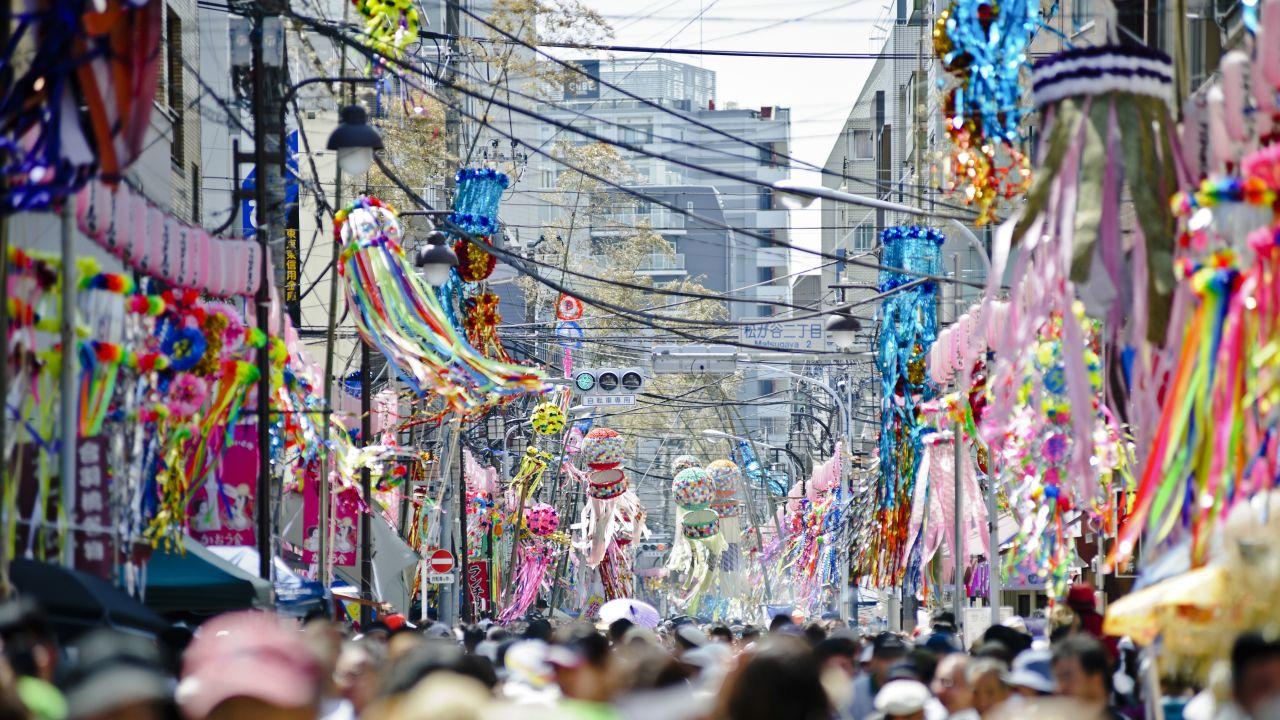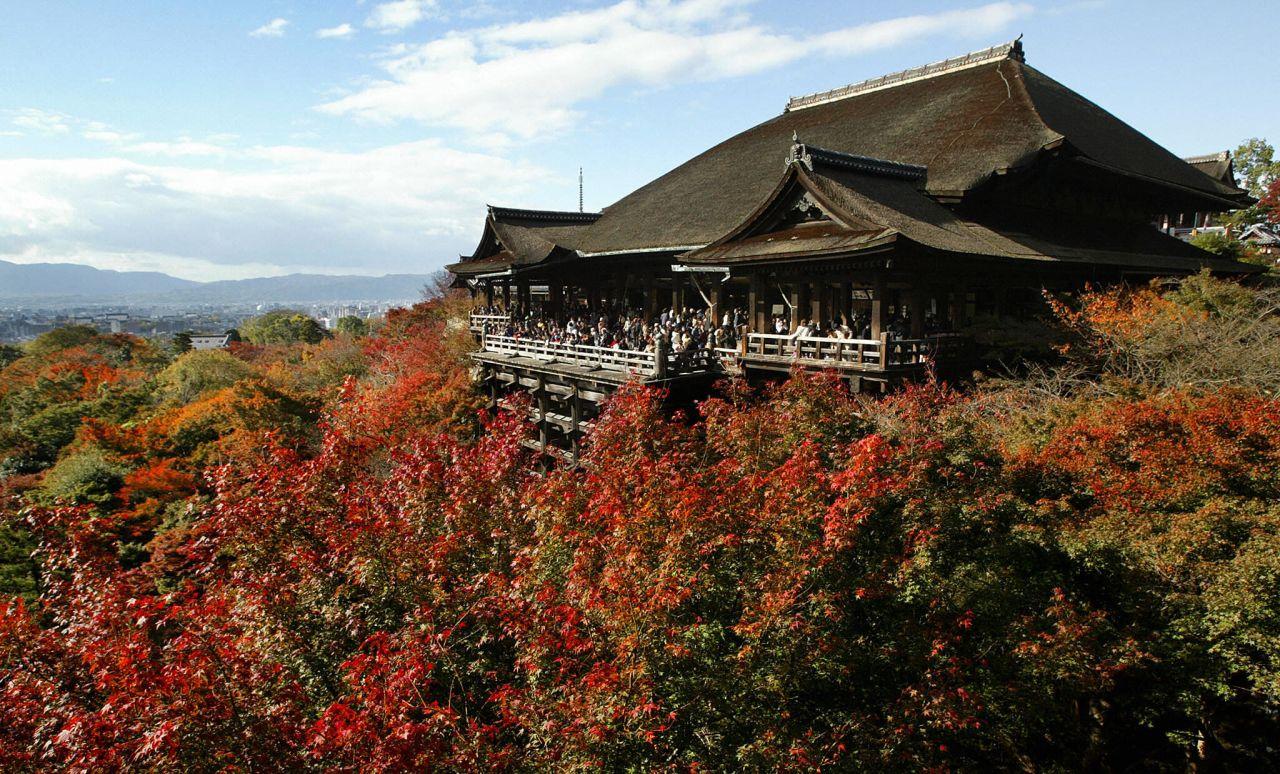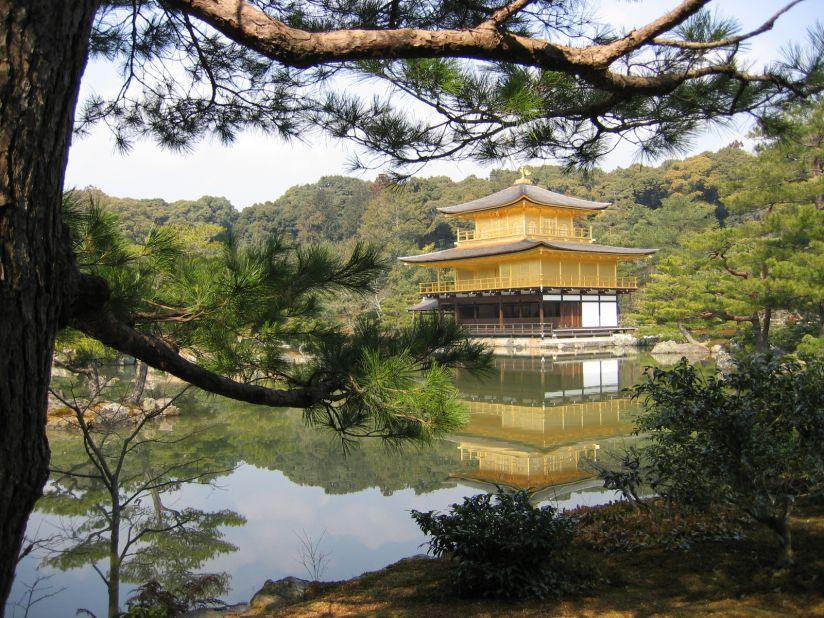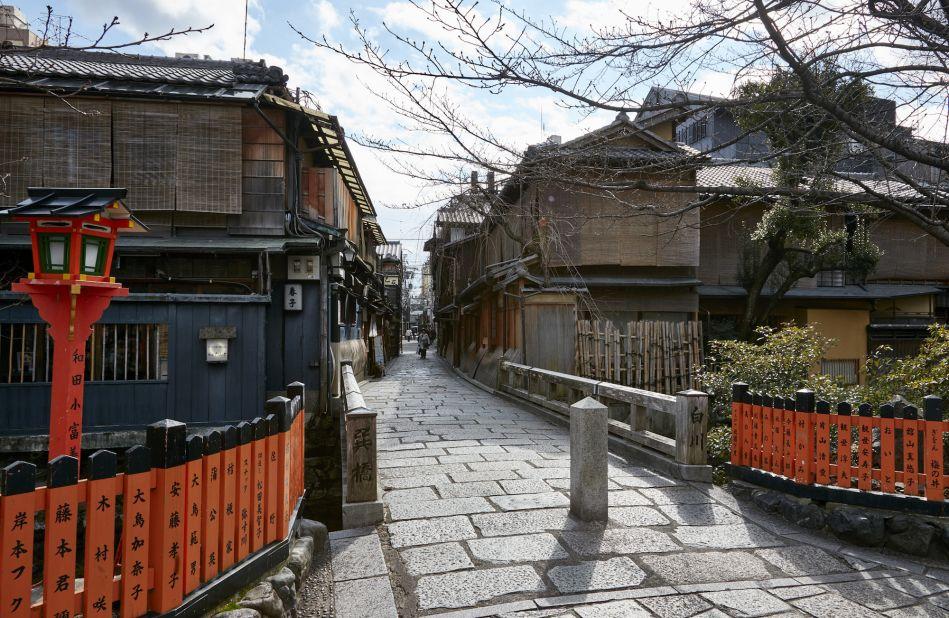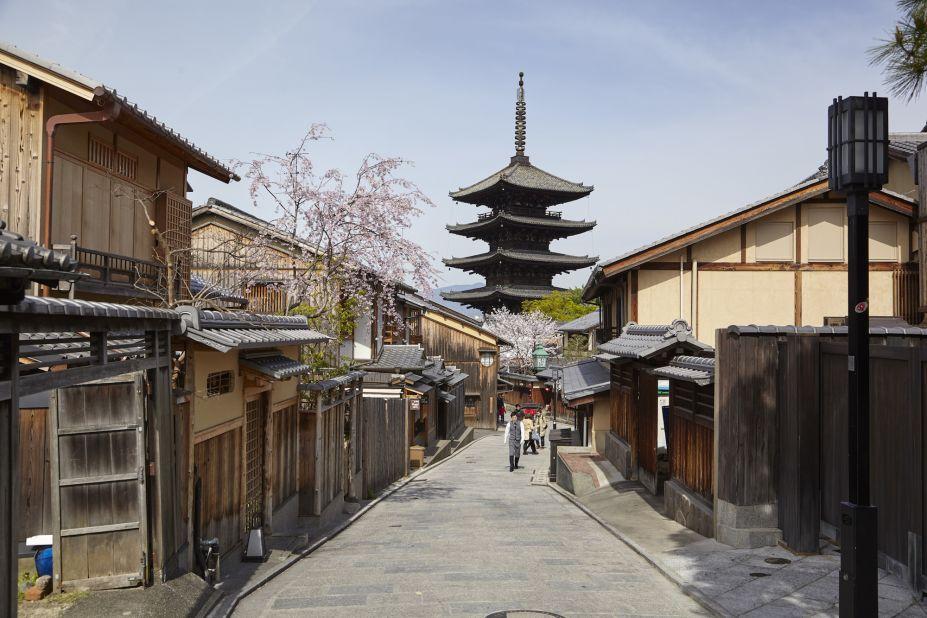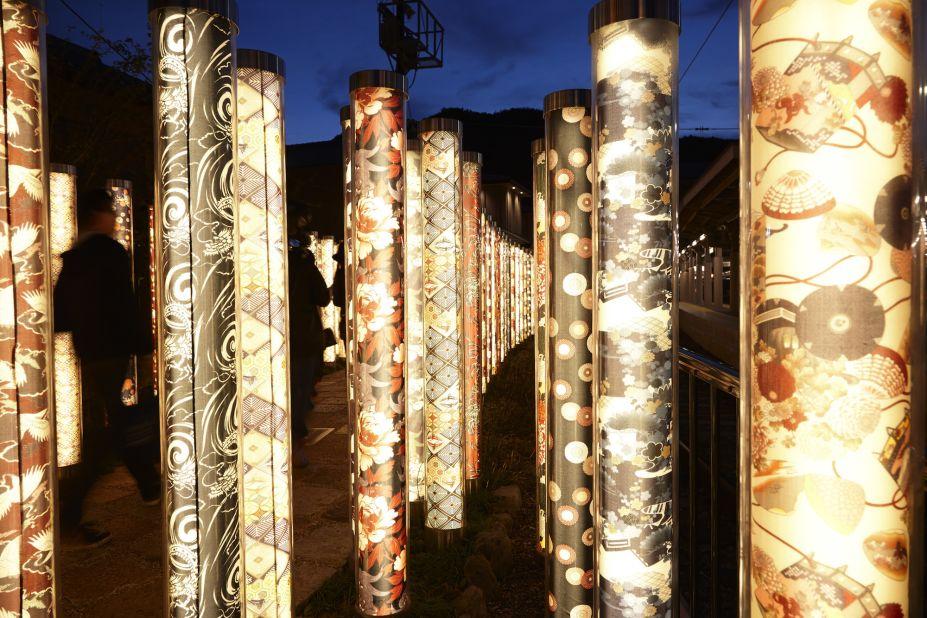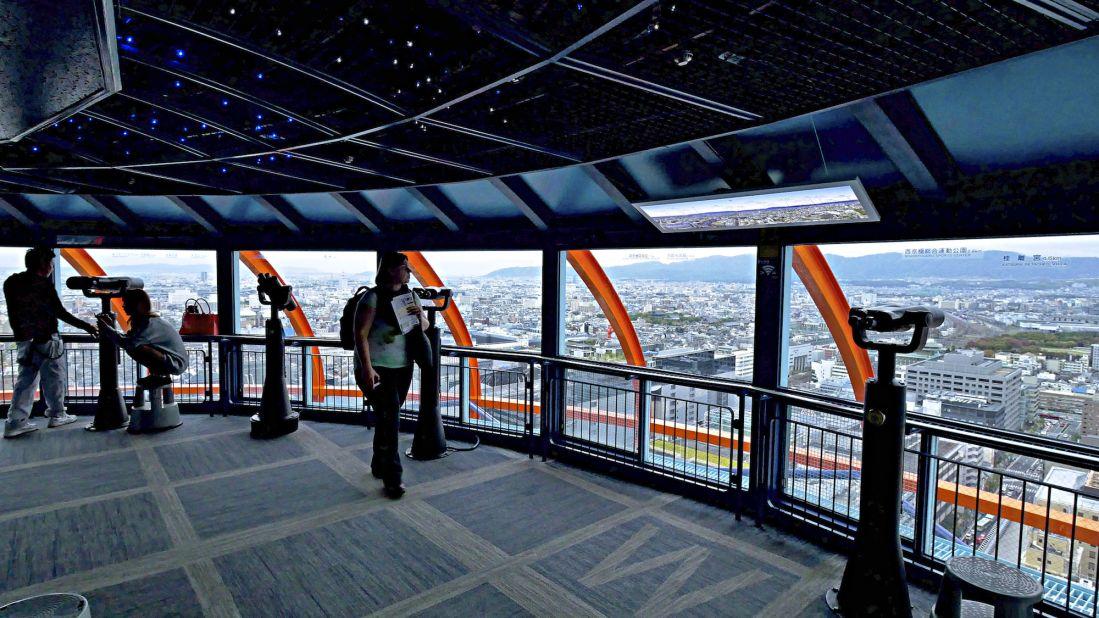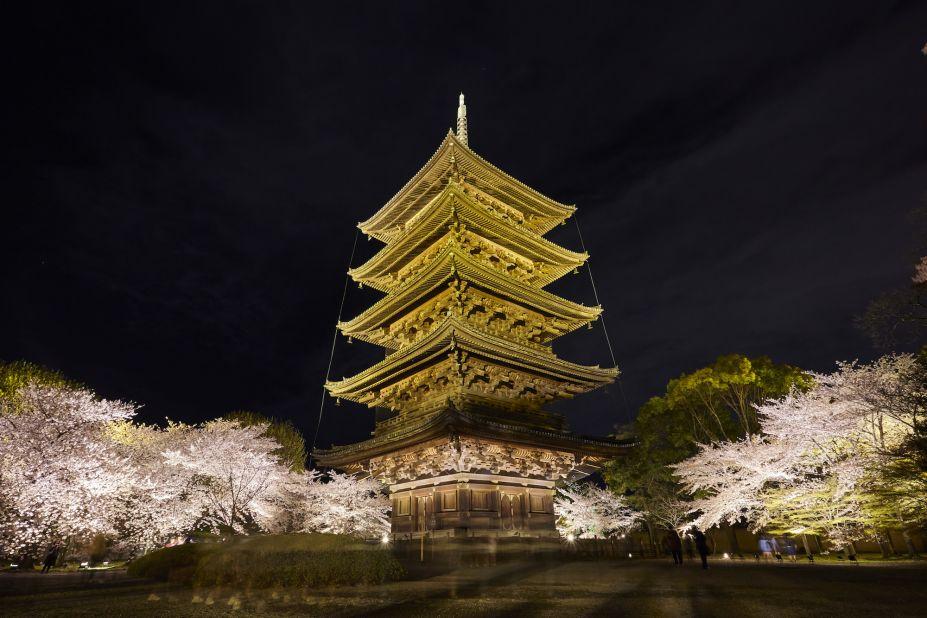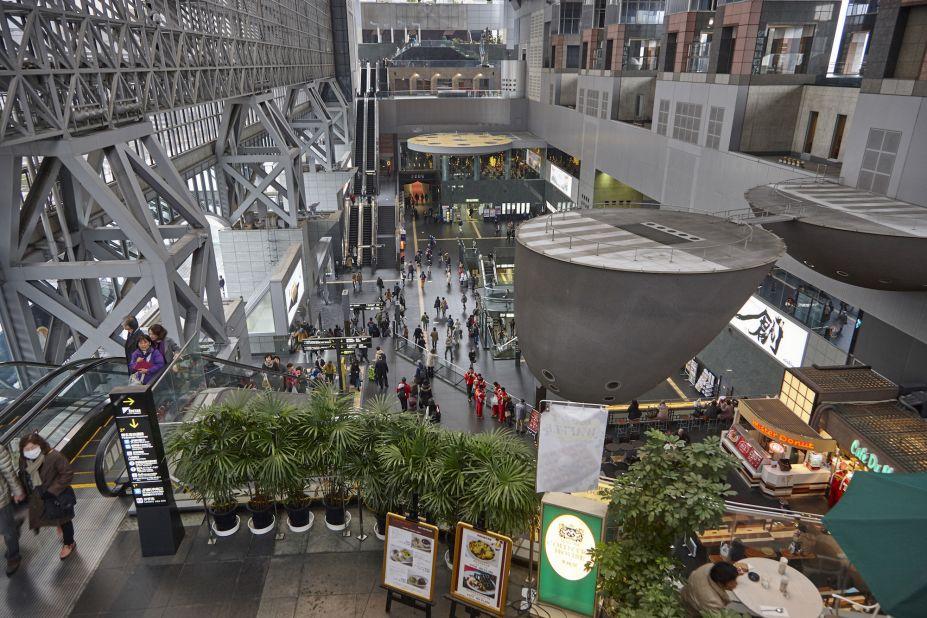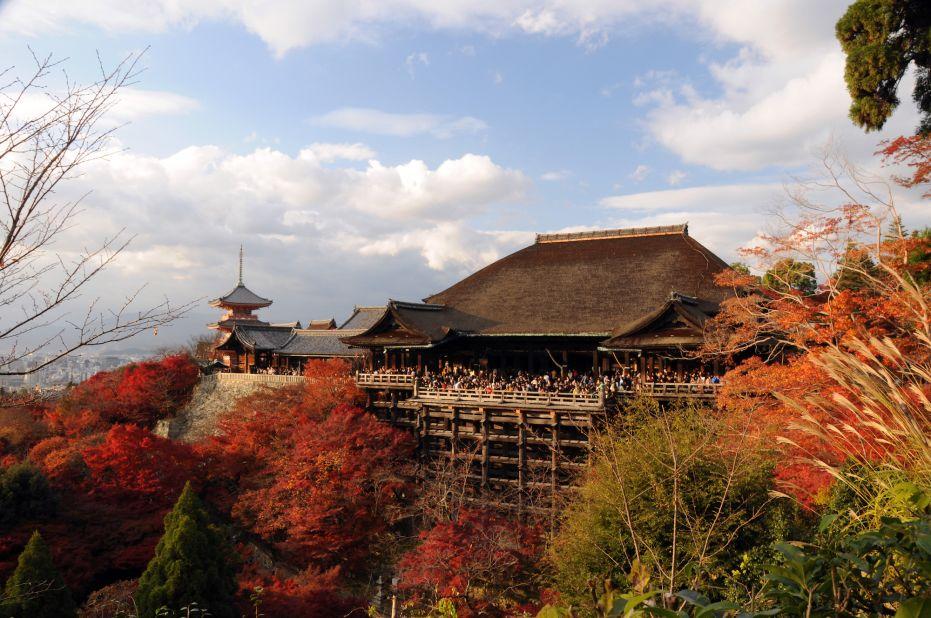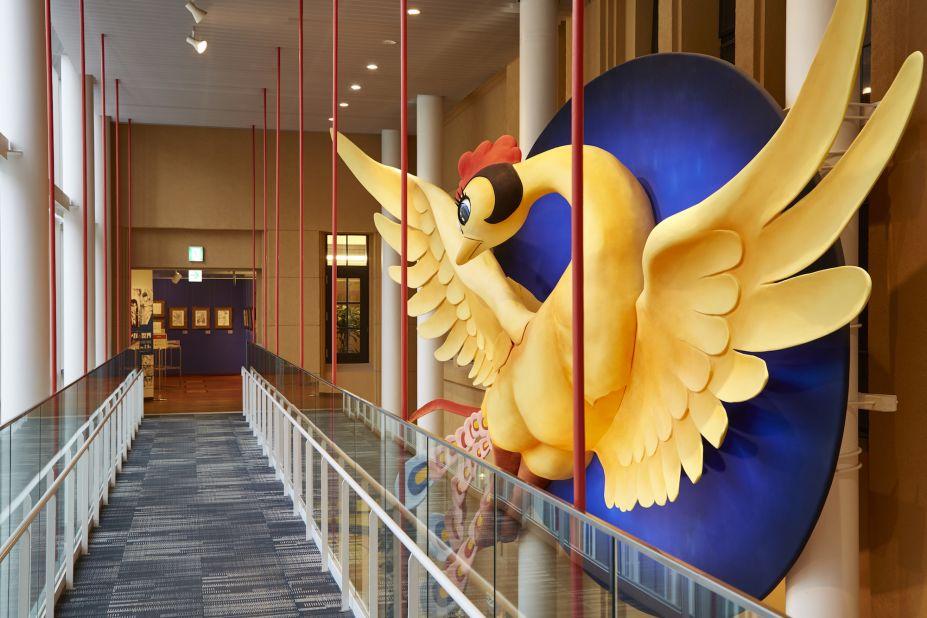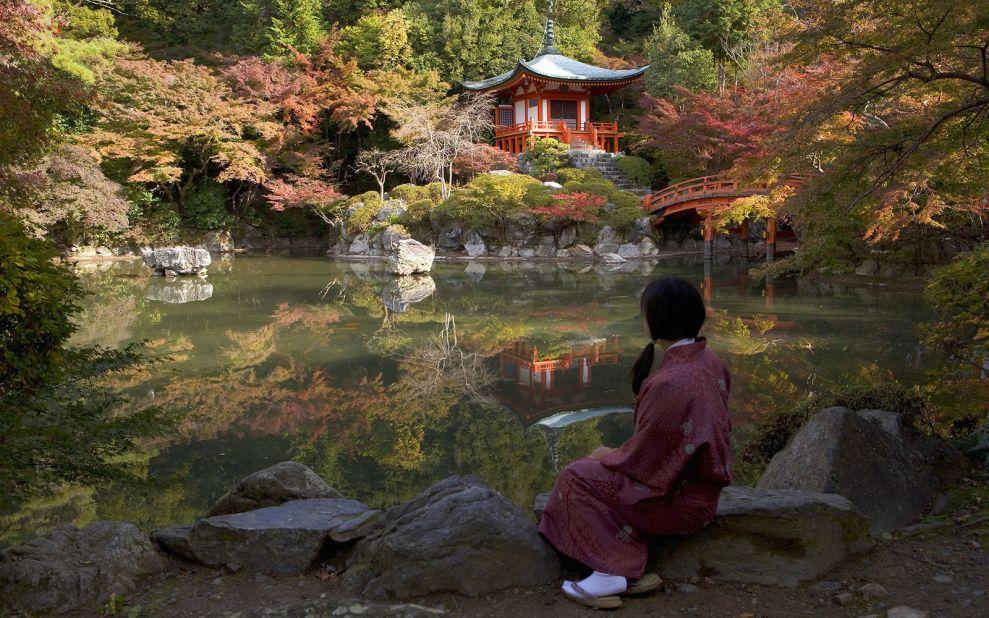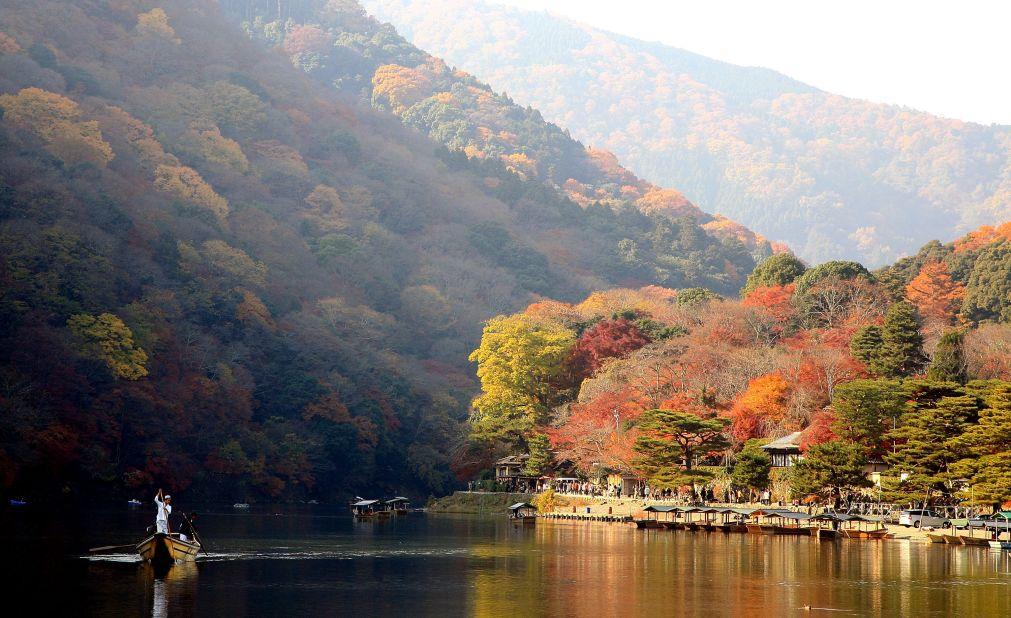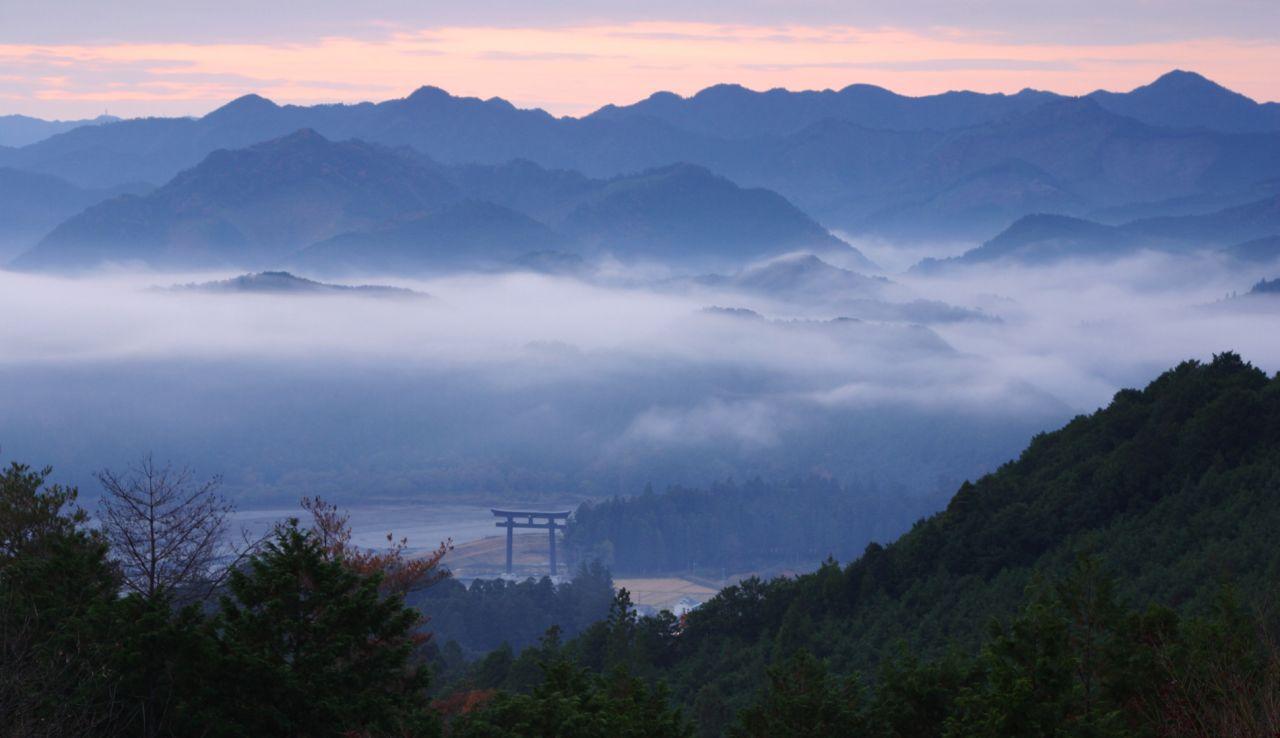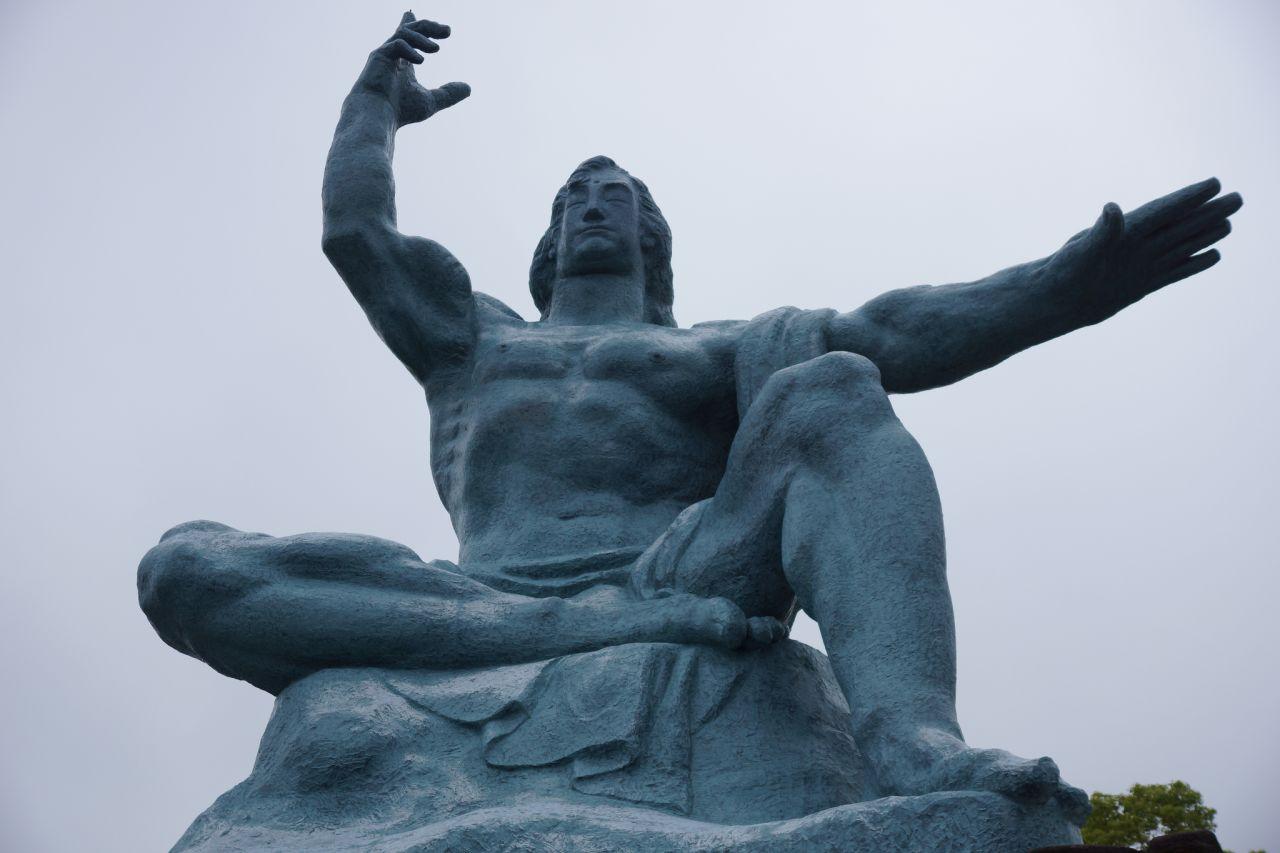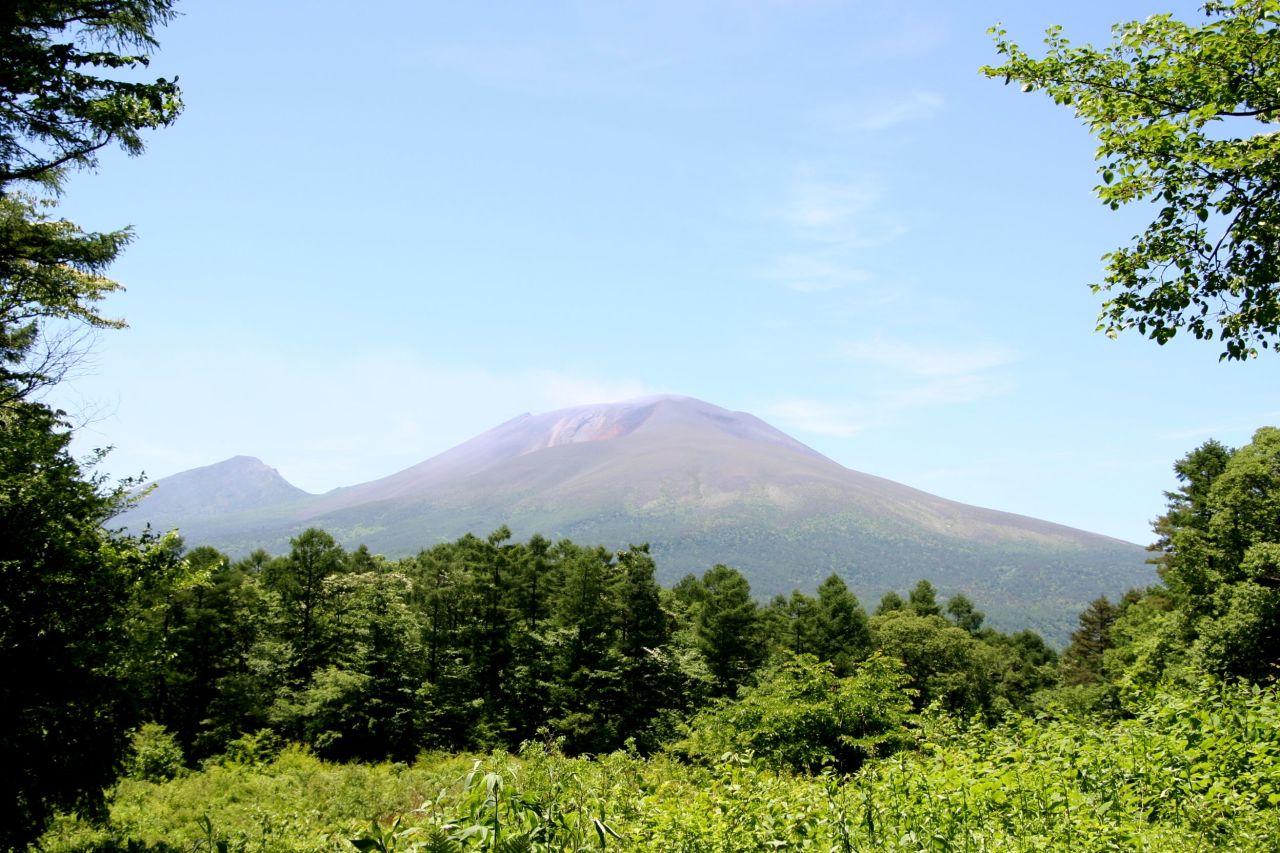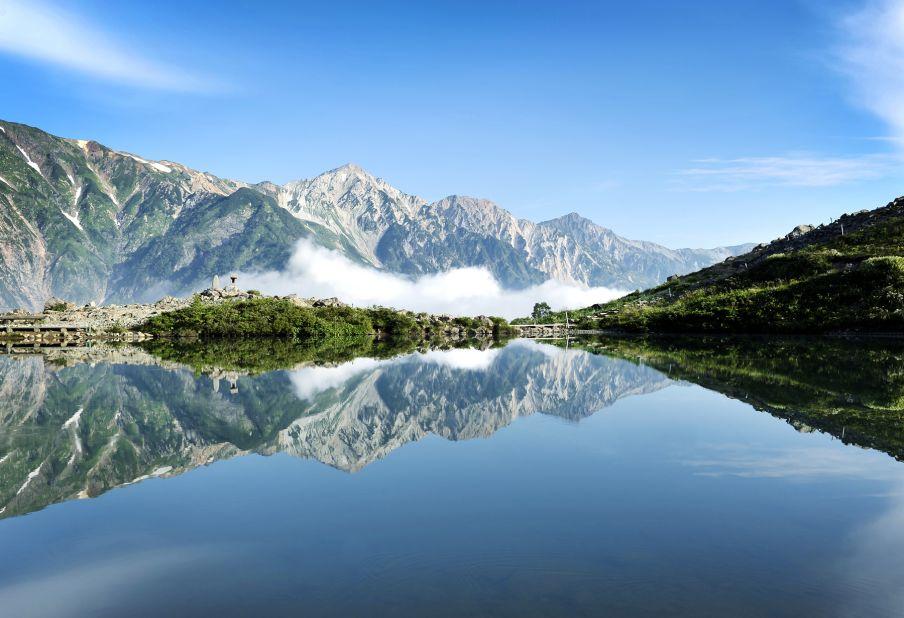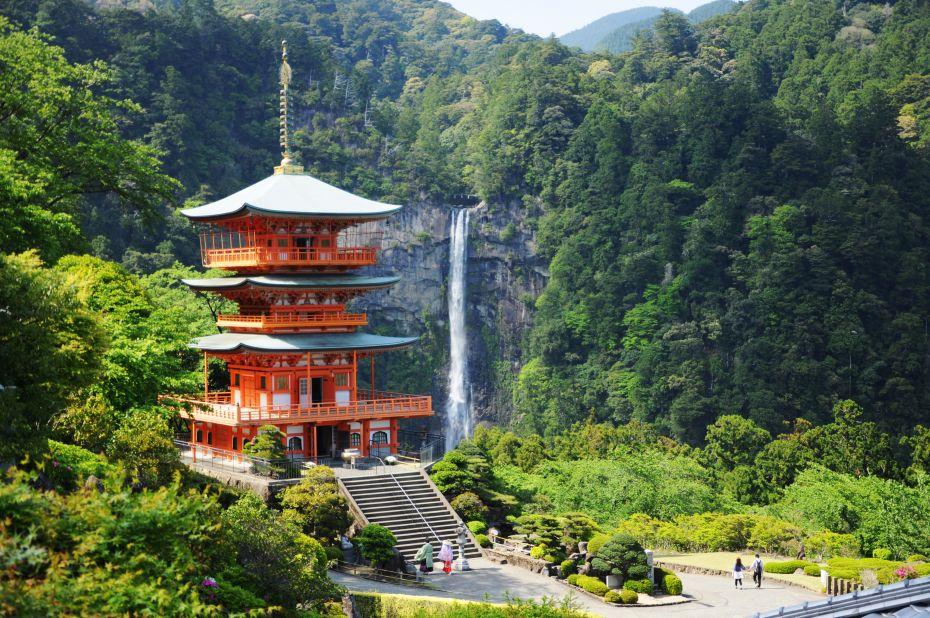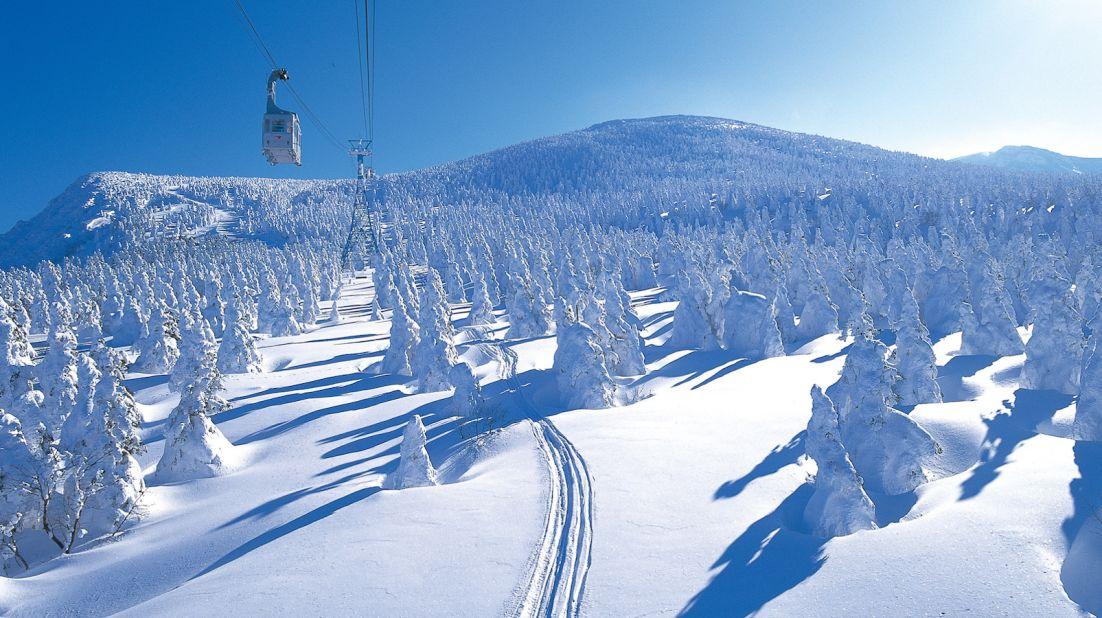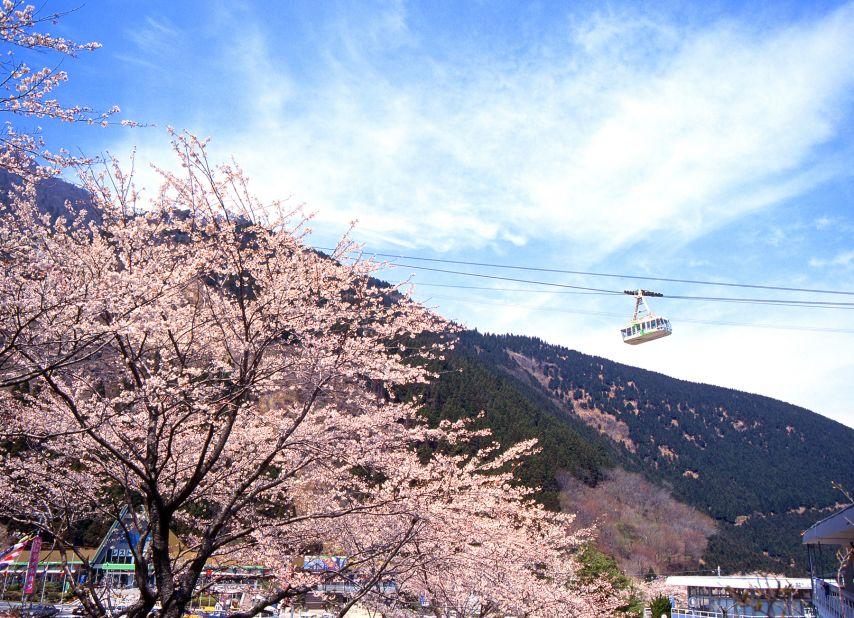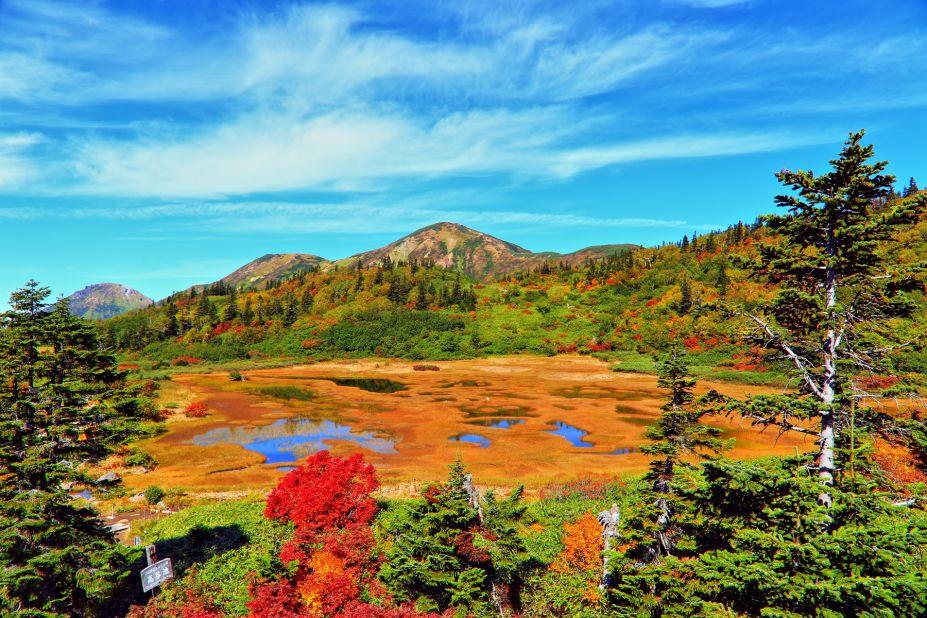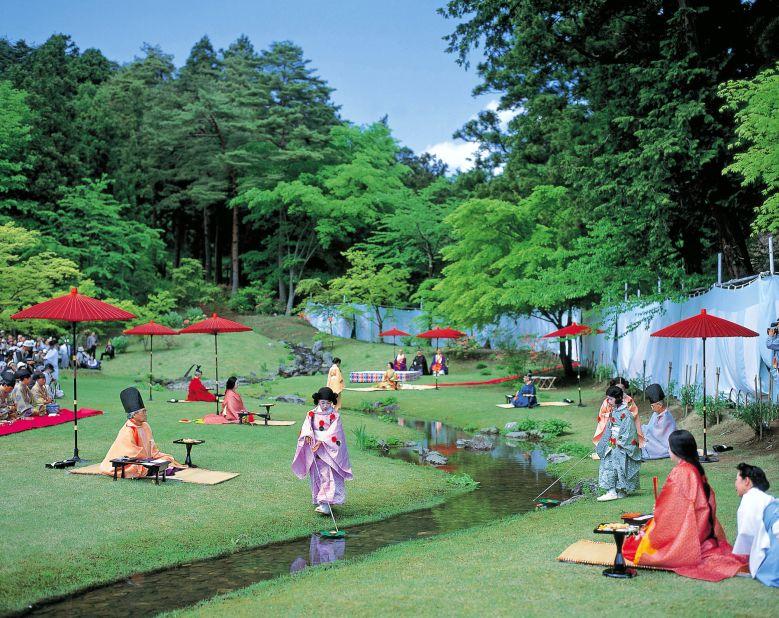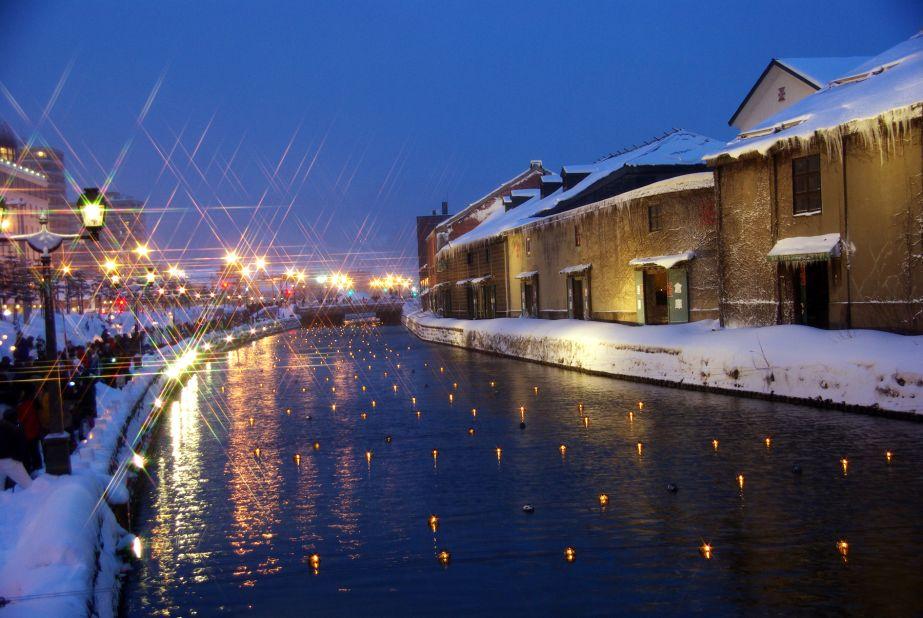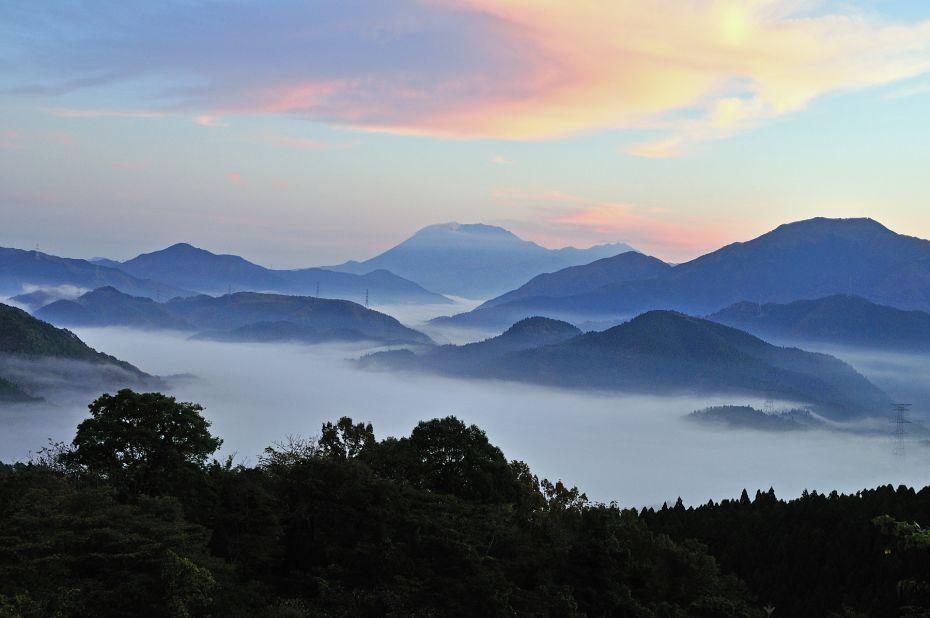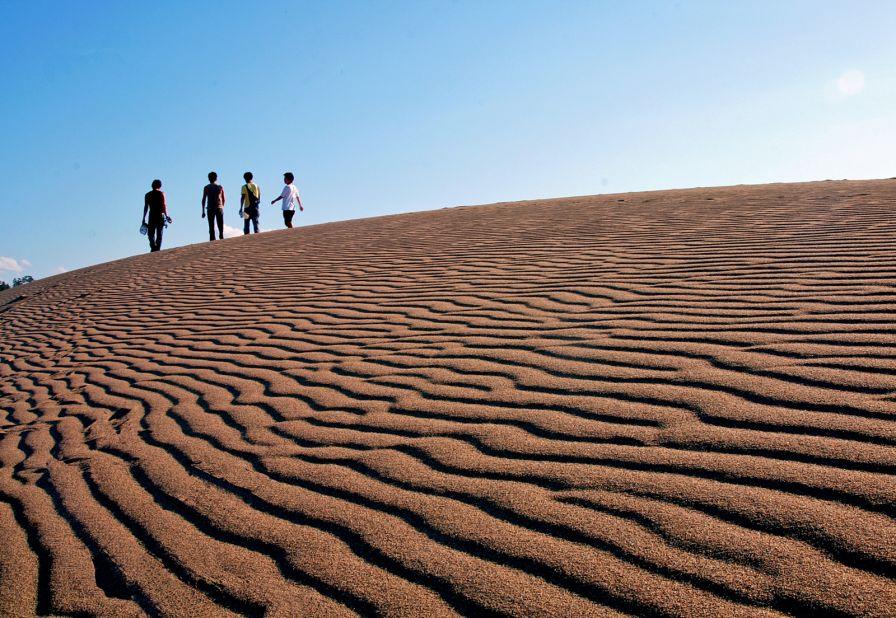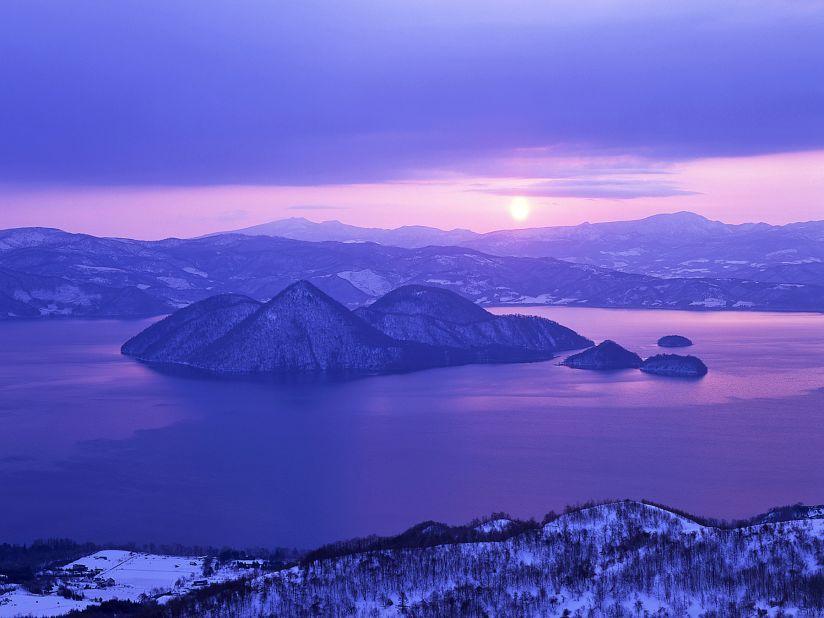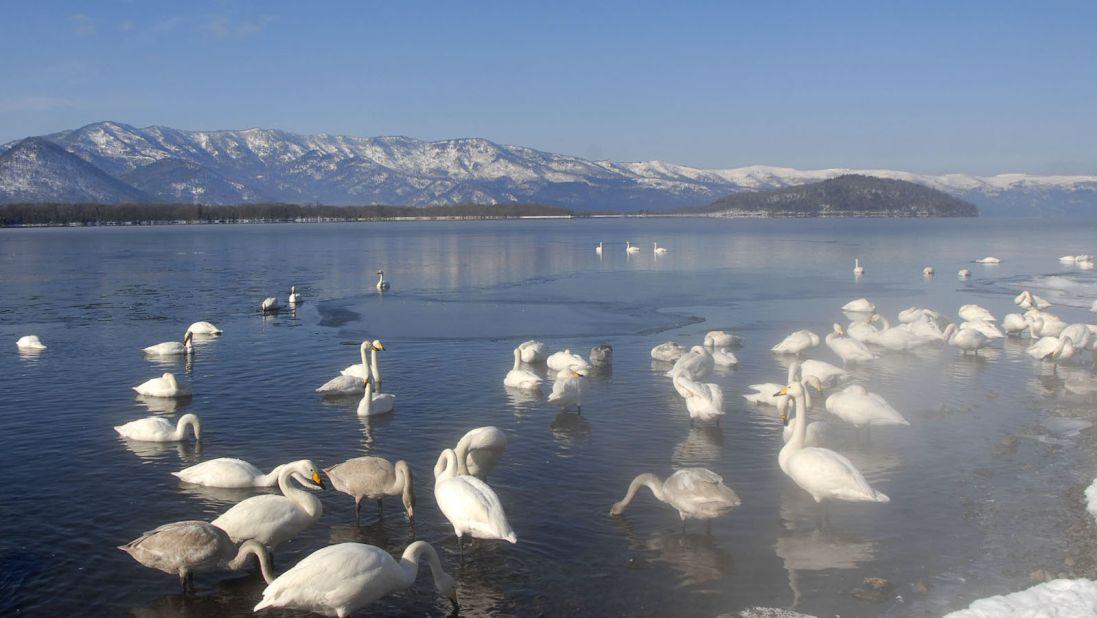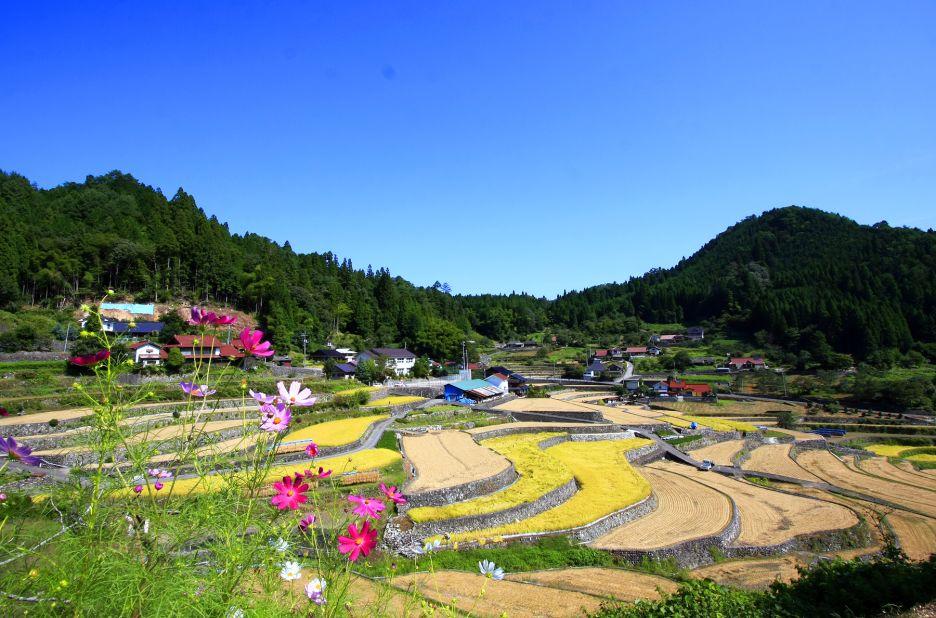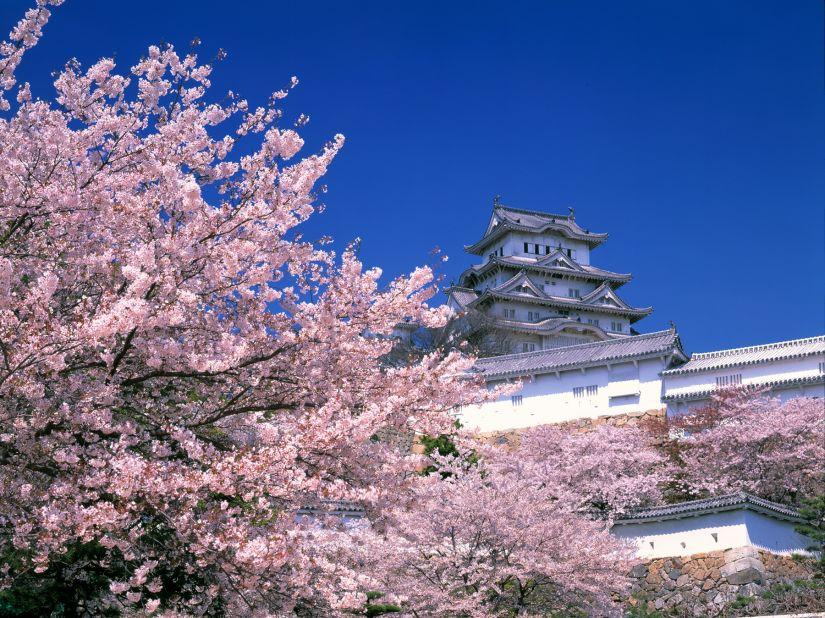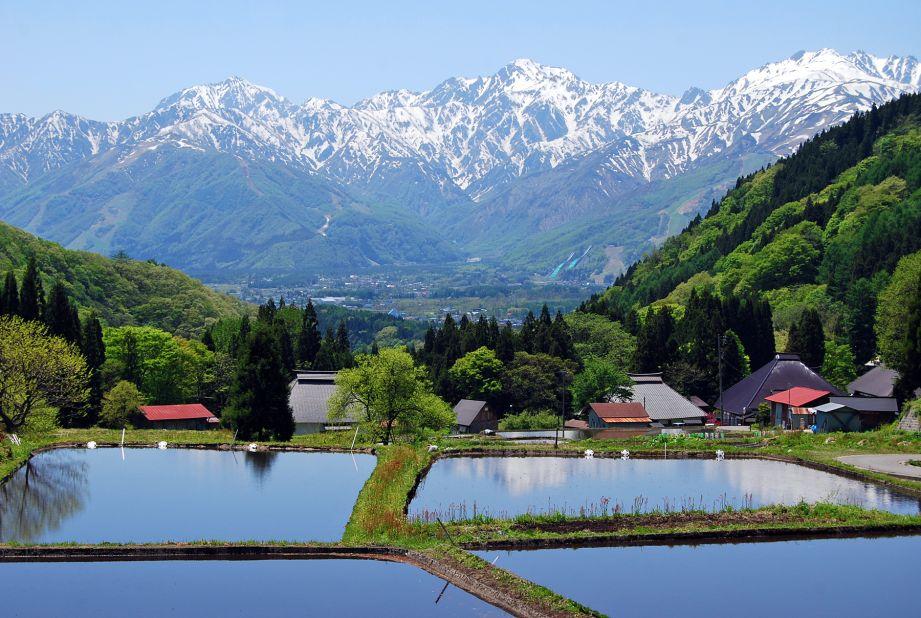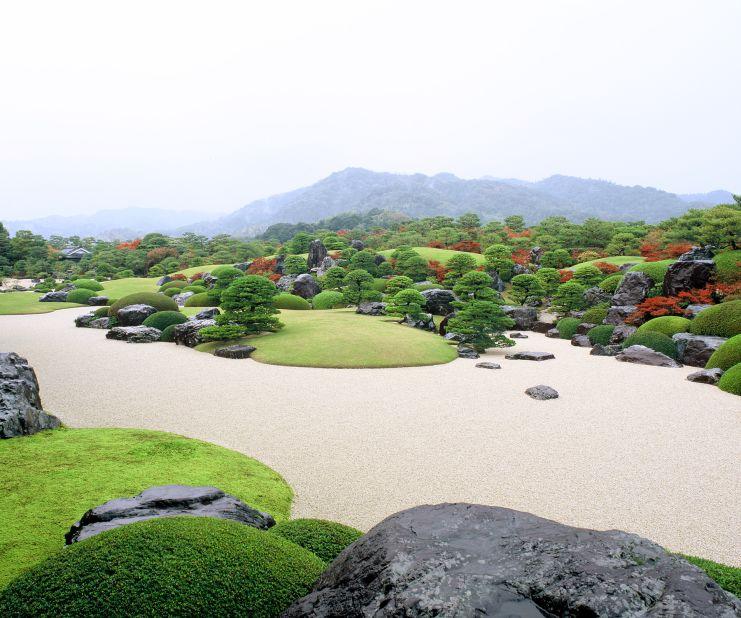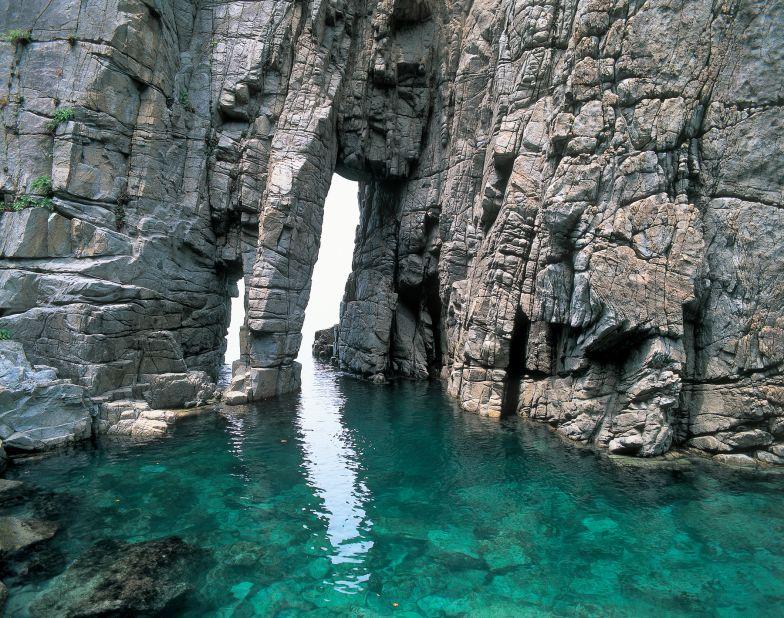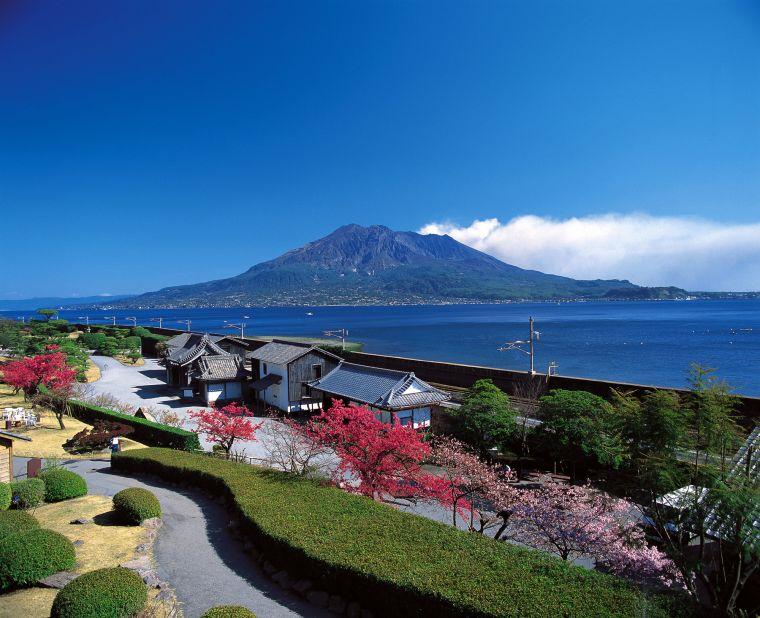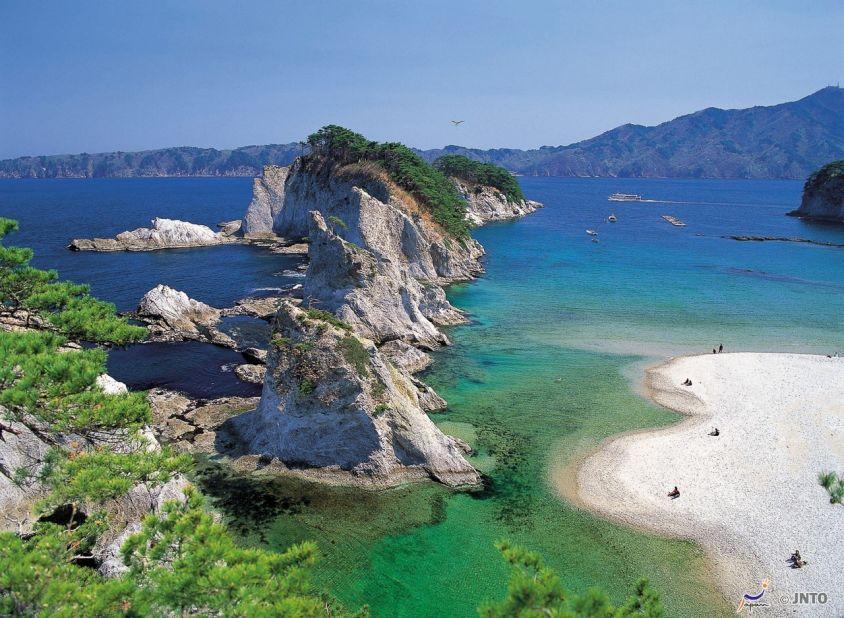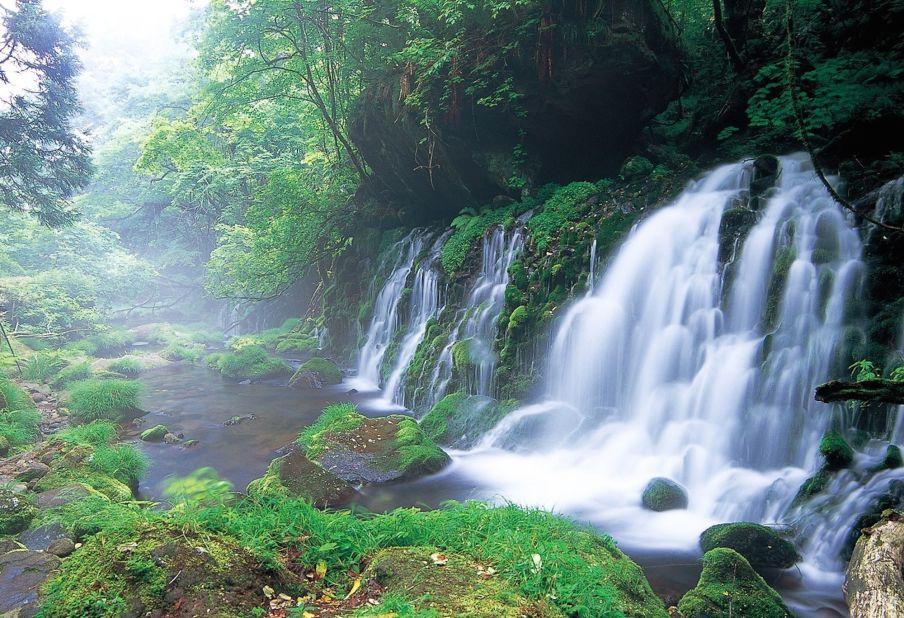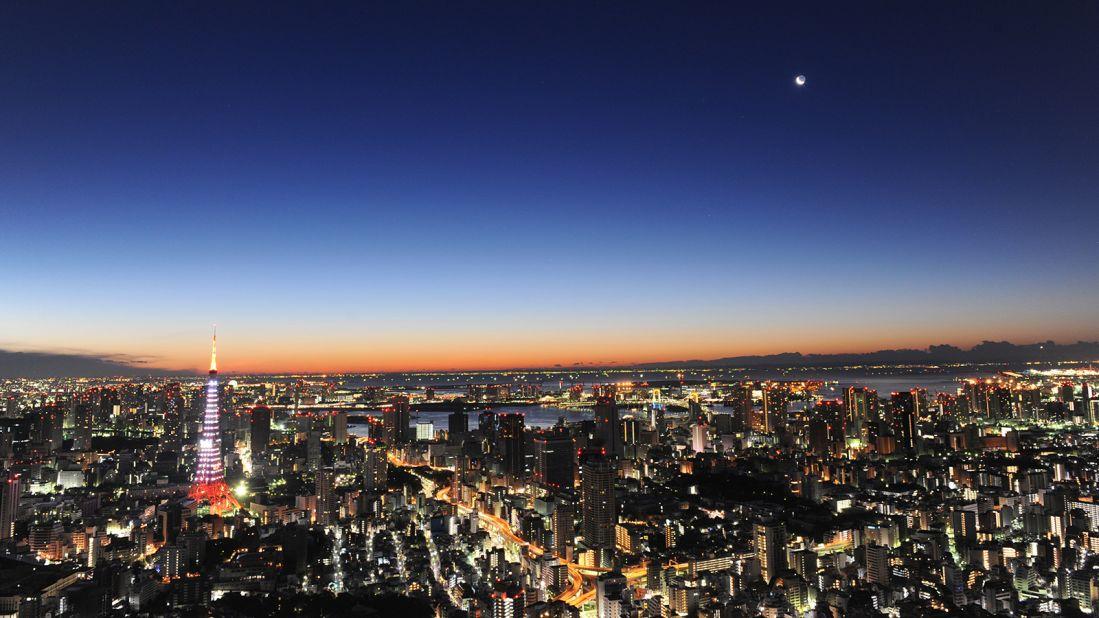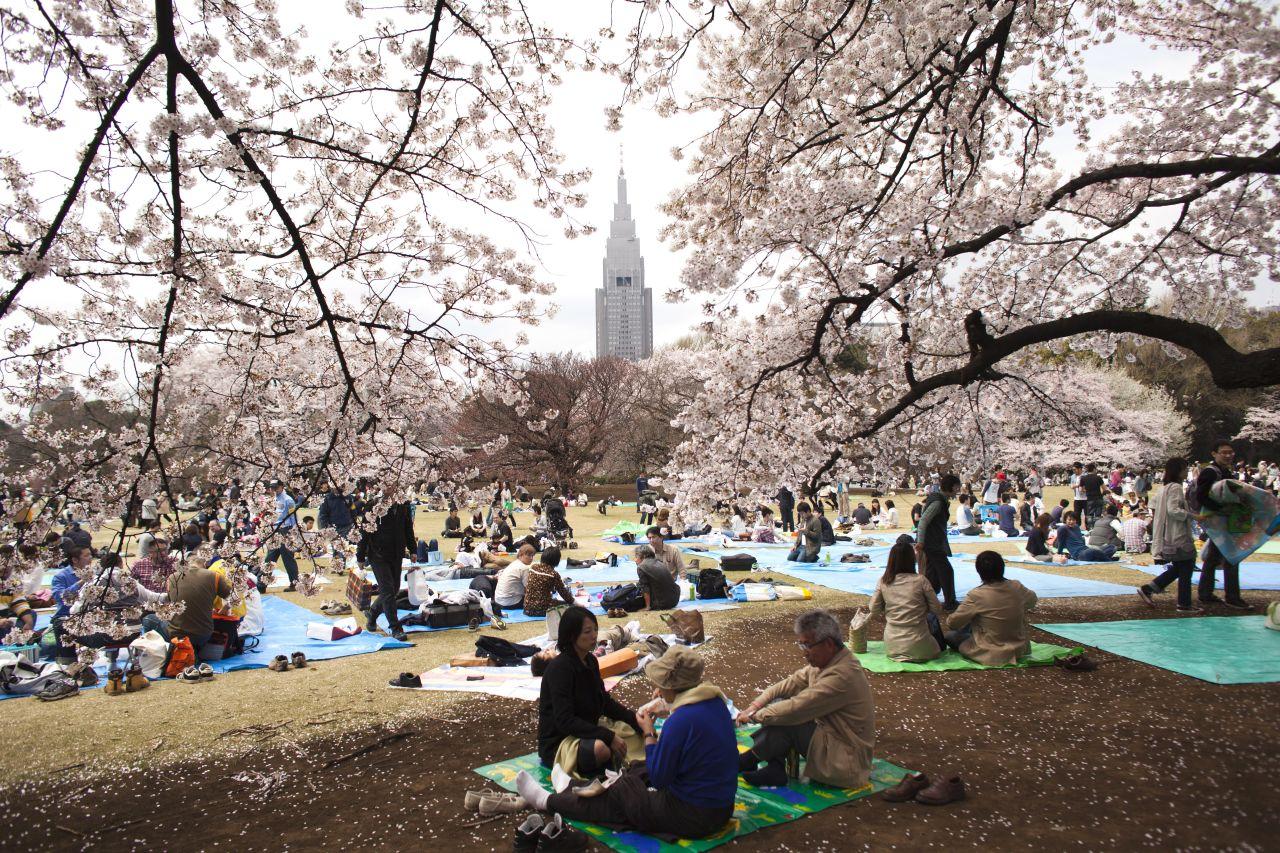Visitors to Japan have so many sights to see and things to do. It’s impossible to fit them all in one trip.
To experience the cityscape of Tokyo and enjoy a taste of luxury, you might consider staying in one of the 5 star hotels in Tokyo on www.tokyo-hotels-stay.com.
But if you want to see some of the most essential places there, make like a local and head straight for these “pure Japan” spots:
1. Ancient Kyoto
Autumnal leaves shroud Kiyomizu-dera Temple in Kyoto.
Why: Let’s face it – most travelers can’t resist the magnetic pull of Japan’s former Imperial capital (794-1869), with its temples, shrines and (dwindling) ranks of geisha.
“Of course, many people from Western countries, like the United States and Canada, like to travel to time-honored cities like Kyoto,” says Mamoru Kobori of the Japan National Tourism Organization.
And lest we forget, the ancient city would have been obliterated by an atomic bomb at the end of World War II had it not been for U.S. Secretary of War Henry L. Stimson, who took it off the list of potential targets because he had fond memories of honeymooning there.
Golden Pavilion: Perhaps the ultimate Kyoto symbol -- or at the very least its most Instagrammed attraction -- Kinkaku-ji was built at the end of the 14th century. A UNESCO World Heritage Site, this Zen Buddhist temple is made up of 132,000 square meters of gardens, ponds and stones. Click on for more beautiful Kyoto scenes.
Gion: Gion, with its traditional wooden machiya houses, is a popular area for tourists hoping to snap a photograph of a Kyoto geisha.
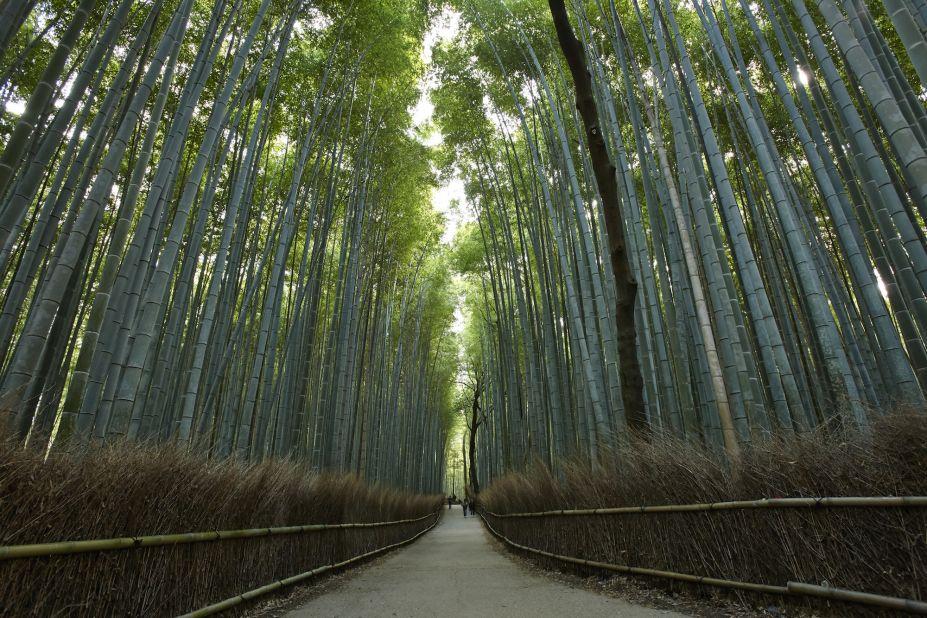
Sagano Bamboo Forest —
Sagano Bamboo Forest: Sagano Bamboo Forest is located in the gorgeous Arashiyama district of western Kyoto. For the best experience, head out early in the morning or late evening and avoid weekends completely, when Japanese day-trippers descend on the area.
Sannenzaka: One of Kyoto's prettiest streets, Sannenzaka is a pedestrian-only lane leading to Kiyomizu temple. It's located in Higashiyama, one of the top places to see preserved Kyoto architecture.
Kawadoko restaurants: Every year, from May to September, "kawadoko" restaurants in the village of Kibune give diners a chance to enjoy their meals outdoors while sitting on tatami mats over the river. Kibune is about 12 kilometers from central Kyoto.
Kimono Forest: This beautiful "forest" of two-meter high pillars, located outside the Randen tram station in Arashiyama, showcases various kimono textiles.
Fushimi Inari Shrine: Another popular site on the Kyoto tourist trail, Fushimi Inari Shrine is made up of thousands of vermillion torii gates.
Kyoto Tower: The 131-meter Kyoto Tower offers panoramic views of the city.
Toji Temple —
Toji Temple: Yet another Kyoto UNESCO-listed site, Toji Temple features Japan's highest pagoda. Standing 55 meters tall, this five-story wooden structure was founded in 794. The temple complex hosts a flea market on the 21st of every month.
Heian Shrine: Relatively new compared to some of Kyoto's ancient sites, Heian-jingu was built in 1895, on the 1,100th anniversary of the transfer of the capital from Nara to Kyoto.
Kyoto Station: Most Kyoto visitors will pass through this station at least once during their journey. Opened in 1997, it services trains to Tokyo and Osaka, among may other cities. The bullet train to Tokyo takes two hours and 15 minutes, while the journey to Osaka is 28 minutes.
Kyoto Railway Museum : One of the city's newest attractions, the Kyoto Railway Museum opened in April 2016. Owned by JR West, it features a variety of exhibits highlighting the country's railroad history.
Kiyomizu-dera Temple: Another UNESCO site, this Buddhist temple is located in eastern Kyoto. For worshippers, Kiyomizu-dera -- which translates to "Pure Water Temple" -- is the home of the Goddess of Mercy.
Kyoto International Manga Museum: Over a decade old, the Kyoto International Manga Museum highlights the historical development of manga and features rarities such as Meiji-period magazines and postwar rental books. There are nearly 300,000 titles from Japan and abroad -- including 50,000 manga that can be flipped through and enjoyed.
Daigo-ji Temple: Established in the 9th century, Daigo-ji, in southeast Kyoto, is made up of three different structures: Sanbo-in, Shimo-Daigo (Lower Daigo), and Kami-Daigo (Upper Daigo). You have to hike to get to the third section so you'll find far fewer tourists there. Guess what? It's also a UNESCO World Heritage Site.
Pontocho —
Pontocho: The historic street of Pontocho, featuring preserved Kyoto architecture, is full of bars, tea houses and restaurants. It's one of a handful of areas you're likely to spot a geisha heading to work.
Nishiki Market —
Nishiki Market: Offering everything from fresh fish and donuts to sake and high-end knives, this massive shopping space is worth at least a couple hours of your time.
Geisha capital: Though geisha can be found throughout Japan, Kyoto is considered the birthplace of geisha culture. A maiko apprentice needs to study for at least five years before she's considered skilled and mature enough to become a full-fledged geisha. How to tell the difference? A maiko will have decorations, like flowers, in her hair.
Katsura River —
Katsura River: Not hard to see why fall is among the most popular times to visit Kyoto. Boat rides on Kyoto's Katsura River, in Arashiyama district, are a great way to take in the season's beauty.
Downtown Kyoto : Can't bear to look at another temple? Kyoto's downtown area is filled with shops, restaurants, hotels and bars.
Kyoto: World's most photogenic city?
For years, people have visited Kyoto to stay in its old ryokans and eat traditional, multi-course kaiseki meals. But they should also consider exploring the city’s new side.
Entrepreneurs are gutting old teahouses and geisha houses and giving them new lives. Niti, located inside a former geisha house, is a sleek bar and cafe that seamlessly blends contemporary touches with Japanese tradition.
Another fascinating stop is The Sodoh Higashiyama Kyoto, an Italian restaurant and bar created inside the former house and studio of celebrated Japanese painter Seiho Takeuchi.
Getting there: Tokyo and Kyoto Stations are connected by the JR Tokaido Shinkansen, which makes the trip several times a day. The journey takes about 140 minutes.
2. Kumano Kodo pilgrimage
The trail to Kumano leads to three sacred shrines.
Why: It’s a side of Japan not many tourists see. Monks, retired emperors, aristocrats and regular folk have been hiking this pilgrimage route since the Heian period (794-1192).
The Kumano Kodo, on the UNESCO World Heritage list since 2004, is a network of well-marked (in both Japanese and English) and well-maintained trails winding through the forests and fields, villages and towns that stretch across the southwestern Kii Peninsula in the Kansai region.
“It’s not like Kyoto or Nara – it’s a little off the beaten path,” says Brad Towle of the Tanabe City Kumano Tourism Bureau.
“The routes lead to inspiring natural sacred sites, and along the way visitors can find isolated hot springs, delicious cuisine and authentic accommodations.”
Arriving at the main ancient shrines and temples may be the ultimate goal, but visiting the “Oji” subsidiary shrines or strolling past towering cedar and cypress trees, water-logged rice paddies and neat green-tea plantations is also immensely pleasurable.
You can take a private dip in the cloudy waters of the Tsuboyu bath in Yunomine Onsen. At 1,800 years old, the onsen is believed to be one of the oldest in Japan. Villagers use the water for soaking, cooking and even drinking.
The geological wonder known as the Kawayu Onsen is also worth experiencing. A hot spring bubbles just below the rocky banks of the Oto River. All you have to do is dig a hole, wait for it to fill up and then plunk yourself down. Voila – instant personal onsen.
Getting there: Japan Airlines (JAL) flies between Tokyo’s Haneda Airport and Nanki-Shirahama Airport, which is a bus ride away from Tanabe City.
Travelers can also board a high-speed train from Tokyo to Osaka, and then transfer to a local express line to Kii-Tanabe.
Kumano Kodo: Rewarding hike far off beaten path in Japan
3. Amazing Nagasaki
The Nagasaki Peace Statue has been a symbol of the city since 1955.
Why: Almost wiped off the map by the 1945 atomic bombing, Nagasaki has been rebuilt into an urban jewel on Japan’s third largest island, Kyushu.
Nagasaki grew from a tiny fishing village into an important port for trade with Europe and China. When the rest of Japan was practically cut off from the world for many centuries, Nagasaki kept its doors open.
These days, visitors come to learn about the city’s history, wander through its small but thriving Chinatown and marvel at the hillside Glover Gardens, which has a statue of Madame Butterfly to remind people of the Puccini opera that was set here.
Nagasaki also has deep Christian roots, with churches like Oura Catholic Church and monuments to missionaries who were executed in the 16th century and became known as the 26 Martyrs of Japan.
The best photo ops are from atop Mount Inasa, which towers 333 meters above the city. You can hike it or ride up on the Nagasaki Ropeway.
Another popular attraction is Gunkanjima, also known as Battleship Island – used in the Bond movie “Skyfall” and accessed via a 50-minute ferry ride.
“This former coal mining community on an island off the coast of Nagasaki Prefecture was abandoned 40 years ago and left to decay,” says Charles Spreckley of custom travel operator Bespoke Tokyo.
“A few years ago it was opened as an eerily romantic, almost apocalyptic tourist attraction.”
Getting there: Japan Airlines and All Nippon Airlines both fly every day between Tokyo’s Haneda Airport and Nagasaki. The trip takes two hours. Travelers can also ride the high-speed JR Tokaido/Sanyo Shinkansen from Tokyo to Fukuoka’s Hakata Station and transfer to the JR Kamome limited express train to Nagasaki.
Japan travel tips: 11 practical suggestions before you visit
4. Cool Karuizawa
Mount Asama is one of Japan's most active volcanoes.
Why: Because it’s one of the most beautiful places to be in Japan in autumn, because it’s several degrees cooler than Tokyo in the summer and because the thrill of being close to one of this country’s most active volcanoes will give your trip that added edge. The 2,568-meter Mount Asama erupted in 1783 and killed an estimated 1,500 people.
Kawachi Fuji Garden (Fukuoka): This fragrant wisteria tunnel is the most stunning display at the Kawachi Fuji Garden. With flowering vines overhead, the walkway is said to inspire a zen-like calm in visitors. The garden displays about 150 wisteria plants of 20 different species. It hosts the annual Wisteria Festival at the end of April, when the flowers are in full bloom.
Happo Pond (Nagano): The hike to Happo pond from Hakuba -- a village known for its winter skiing amid the mountains of Nagano Prefecture -- is a classic trail in the Japanese Alps. Surrounded by the Hakuba Peaks, the pond is 2,060 meters above sea level. What the pond lacks in size, it makes up for in beauty, reflecting the 3,000 meter tall peaks in its quiet waters.
Motonosumi-inari Shrine (Yamaguchi): The 123 Torii gates stretches from the Motonosumi-Inari Shrine to the cliff overlooking the ocean. Motonosumi-Inari is a popular shrine where locals wish for success. The final Torii's donation box is placed out of reach at the top of the gate. It's believed that if you can successfully toss money into the box, all your wishes will come true.
Nachi Falls (Wakayama): Nachi Falls, at 133-meters high, is the biggest waterfall in Japan. It steals some of the attention from Kumano Nachi Taishai, a sacred shrine built close by. It's usually the last stop of the scenic pilgrimage known as Kumano Kodo.
Zao ski resort (Yamagata): With 15 slopes and 12 courses, Zao Onsen is one of the most well known ski resorts in Japan. But travelers come to Zao not only for the snow-capped mountain but the trees. Extreme snow and seasonal winds cocoon the mountain's pine trees during the coldest winter months, creating snow towers in obscure forms known as "ice monsters" or Juhyo in Japanese.
Kintetsu Beppu Ropeway (Oita): For those who don't enjoy hiking, this cable car can carry 101 passengers at a time to the top of the 1,375-meter-high Mount Tsurumi in 10 minutes. From the top, there's a view of Beppu, Mount Yufu and Kuju Mountain Range. The best time to ride up is during spring when more than 2,000 cherry trees blossom on the mountain.
Matsumoto Castle (Nagano): Also known as the "crow castle" because of its black exterior, Matsumoto is Japan's oldest wooden castle, constructed more than 400 years ago. The years during the castle's construction were marked by near-constant military conflict. Rather than focusing on residential comforts, the castle is fortified with extensive interconnecting walls, moats and gatehouses.
Shiratani Unsuikyo Gorge (Kagoshima): Hayao Miyazaki fans will find this forest familiar. Shiratani Unsuikyo Gorge inspires Studio Ghibli's fantasy animation "Princess Mononoke." The otherworldly nature park on Yakushima Island offers a network of maintained hiking trails along the ravine. From historic tracks built in the Edo period to developed footpaths paved in stone and wood, the circuits range from one to five hours long, varying in difficulty.
Koya Pond (Niigata): Fall at Mount Hiuchi brings out spectacular colors on Koya Pond. The shallow and marshy water covered with vegetation changes colors -- into red, orange, yellow and green -- like the forest around it. On the edge of the pond, Kouyaike Hutte provides beds and kitchen facilities if you need a rest on you hike up the 2,462-meter-tall mountain.
Poetry Reading at Motsu-ji Temple (Iwate): On the fourth Sunday of May, Motsuji Temple invites poetry lovers to write by the stream of the temple's garden pond. As they compose their verses, cups of sake float to them -- to help the float of inspiration, we assume. The event is concluded with the master of ceremonies reading each poem aloud.
Hitachi Seaside Park (Ibaraki): Also known as "baby blue eyes," more than 4 million nemophilas bloom from late April to May in Hitachi Seaside Park, the public park on Miharashi Hill. The Nemophila Harmony is the highlight of park's flowering events. The 190-hectare park constantly changes color with the seasons. During the transition into fall, puffy kochia shrubs turn from vibrant green to fiery red.
Sagano (Kyoto): Considered one of the world's most beautiful forests, it's not just tranquil visually but also aurally. The bamboo grove is beloved for its distinct rustling sound, so much that Japan's Ministry of Environment included the Sagano Bamboo Forest on its list of "100 Soundscapes of Japan." The towering green stalks creak eerily while leaves rustle in the sway of the wind.
Otaru Snow Light Path Festival (Hokkaido): Hundreds of buoyed candles float in Otaru Canal every February in Otaru, during the Snow Light Path Festival. For 10 days, lanterns and snow statues for 10 days adorn the Hokkaido city. Lined with restored warehouses and gas lamps, Unga Kaijo -- the area around the canal -- is the prime spot to enjoy the festival.
Usa Shrine (Oita): Originally built in the 8th century, Usa Shine is the most important of thousands of shrines dedicated to Hachiman, the god of archery and war. After getting a fortune paper (omikuji) -- hopefully a daikichi (exceptionally lucky) one, visitors can enjoy a local specialty called negiyaki, or green onion pancake, in the shrine area.
Mt. Daisen (Tottori): Mount Daisen looks vastly different depending on which side of the mountain its viewed from. The 1,709-meter-tall volcanic mountain has been regarded as sacred since the ancient Jomon and Yayoi eras. Because of its importance, climbing was strictly prohibited until the Edo period about 200 years ago.
Tottori-sakyu Sand Hills (Tottori): Yes, there's a desert on Japan's islands. The Tottori Sand Dunes span 16 kilometers long and 2 kilometers wide and are the only large sand hills in Japan. The dunes are a blend of sand and volcanic ash mixed over 100,000 years then shaped by winds from the Sea of Japan. Part of the San'in Kaigan Geopark, they can be experienced via camel rides, dune buggies and sandboarding.
Itsukushima Shrine (Hiroshima): Believed to be the boundary between the spirit and human worlds, the Otorii's vermilion color is said to keep evil spirits away. It's possible to walk to it on the sand bar during low tide and enjoy the view of Mount Misen behind the gate. At high tide, the 16-meter-high Torii appears to float on the water.
Lavender farm (Hokkaido): Farm Tomita has three lavender fields: Lavender East, Sakiwai Field and the Traditional Lavender Garden. Sakiwai Field, meaning "happiness field," has four types of lavender growing in rows, creating a gradient of purple with the rainbow colors of Autumn Field, Spring Field and Hanabito Field as background. Still not enough lavender? Try the farm's lavender ice cream.
Lake Toya (Hokkaido): Even in winters that plummet well below freezing point, Lake Toya never ices over. The near-circular lake is the remains of a volcanic eruption that hollowed out the ground. Mount Usu lies on the southern rim of the lake and Nakajima Island sits at the center.
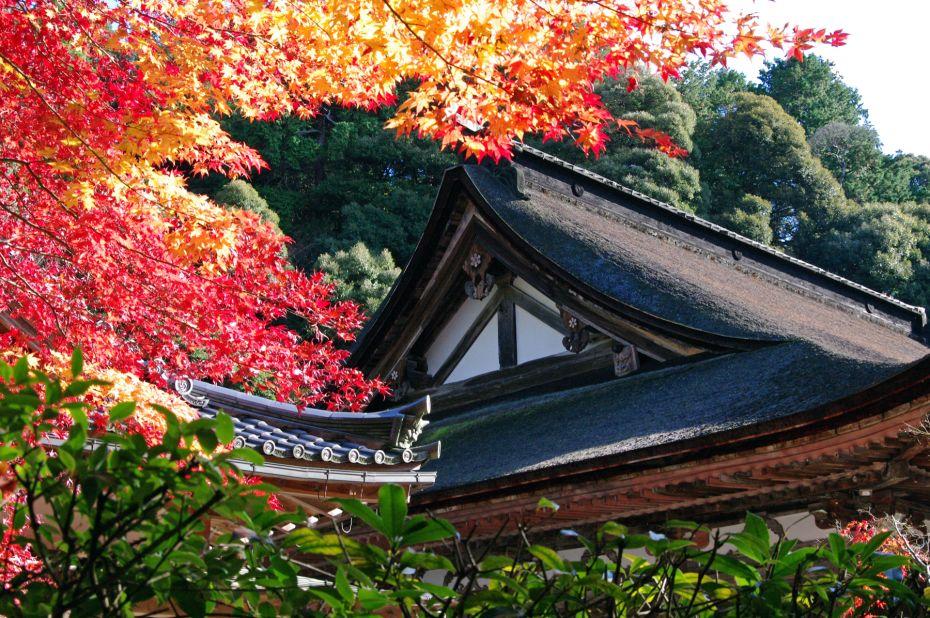
Saimyoji Temple (Shiga): Located in the Suzuka mountain range, Saimyoji Temple is one of a trio of ancient Tendai Buddism temples in eastern Shiga, also known as "Koto Sanzan." The temple is renowned for the beautiful red and orange leaves that surround it in the fall and long blooming cherry trees.

Gokayama (Toyama): Gokayama is one of the greatest towns for architecture buffs in the world. The oldest traditional gassho style house in Ainokura is said to be about 400 years old. Part of the UNESCO-designated area of Gokyama, the village preserves an architectural design that dates back hundreds of years. The steep triangular thatched roofs were built without the use of nails and are designed to prevent snow buildup.
Lake Kussharo (Hokkaido): Some 300 whooper swans migrate to Lake Kussharo every winter. Geothermal springs prevent ice from forming along its sandy shores despite most of the water surface freezing. Reported sightings of a lake monster, dubbed Kusshii by the media, since 1973 earned Kussharo a reputation as Japan's Loch Ness.
Ini Tanada (Hiroshima): Ini has more than 320 terraced rice paddies. The oldest stone terrace dates back about 500 years.
Using only pure natural water from mountain valleys, Ini Tanada's rice is particularly favored for its rich fragrance and taste. The town regularly holds a rice planting event on its terraces to pass on traditional farming methods.
Himeji Castle (Hyogo): Frequently called the "White Egret" or "White Heron" castle because of its white exterior and resemblance to a bird taking flight, Himeji is made up of 83 buildings. The 17th century castle is equipped with heavy defense systems. It featured extensively in Hollywood and Japanese films, making a prominent appearance in the James Bond movie "You Only Live Twice."
Jigokudani Monkey Park (Nagano): The steaming springs set in a snowy mountain may be scenic, but travelers come here to see something else -- the hot spring monkeys. Some 200 Japanese macaque monkeys live in Jigokudani -- which translates to "hell valley" -- where the rough cliffs and onsens are covered in snow for a third of the year. The monkeys bathe at the main onsen of the park in winter without a care for observers.
Anyone jealous of the monkey's lazy ways can head over to Korakukan Ryokan for their own thermal soak.
Hakuba village (Nagano): Revered as a ski resort town in the northern Japanese Alps, Hakuba is equally appealing during the summer. The hike up to Happo Pond is among the most scenic trails in the country.
Adachi Museum of Art (Shimane): The Adachi gardens, a part of Adachi Museum of Art, are said to be a "living Japanese painting" and one of the most beautiful gardens in Japan. Adachi Zenko founded the museum in 1980 to combine his passion for Japanese art and gardening.
Sotomo Arch (Fukui): One of the most scenic spots in the bay of Wakasa, the Big Gate and Little Gate of the Sotomo Arch were holes on rock carved by the rough waves of the Sea of Japan. With some careful maneuvering, it's possible to climb into the Little Gate. An excursion ship, which departs from the Wakasa Fishermen's Wharf, offers rides to view the rock formation.
Fuji Shibazakura Festival, (Yamanashi): With Mount Fuji in the background, some 800,000 stalks of shibazakura or "moss phlox" cover 2.4 hectares of land in a carpet of pink, white and purple. Thousands travel to the Fuji Five Lakes area for the festival celebrating the flower's first bloom.
Senganen Garden (Kagoshima): The Japanese style landscape garden features small ponds, streams, shrines and a bamboo grove. Set along the coast north of downtown Kagoshima, visitors can look out at Sakurajima volcano and Kagoshima Bay. The garden dates back to 1658, during Japan's Edo period.
Golden Pavilion (Kyoto): Covered in gold leaf, Kinkaku-ji, or the Golden Pavilion, is arguably Kyoto's most famed attraction.
Jodogahama Beach (Iwate): It's easy to see why this stunning Iwate prefecture beach was named "Jodogahama," or Pure Land. Located in Rikuchu Kaigan National Park, it's one of Japan's nationally designated places of scenic beauty.
Kumano Kodo (Wakayama): Kumano Kodo, as seen here from the famous Hyakken-gura viewpoint, is a network of seven pilgrimage routes. It's one of only two UNESCO-listed pilgrimages in the world. Find out how to tackle Kumano Kodo here.
Mototaki Waterfall (Akita): This pretty waterfall, fed by year-round snow on Mount Chokai, remains chilly even during the warmer seasons. It's in Akita prefecture in Japan's Tohoku region.
Mount Fuji: One of Japan's three sacred mountains and one of its most recognizable natural attractions, Mount Fuji is a popular hiking destination for pilgrims and travelers. Its seemingly symmetrical shape is an icon that has appeared on many postcards and artworks in Japan.
Tokyo: Tokyo's cityscape -- a mix of historic temples, skyscrapers and the iconic Tokyo Tower -- is a sight Japan lovers never tire of. The open-air Sky Deck of Roppongi Hills is one of the best places to snap an Instagram-perfect shot like this one.
However, the town’s natural beauty and charm help people to forget about the risks. Emperor Akihito met his future Empress on a tennis court here in 1957. John Lennon and Yoko Ono holidayed in Karuizawa in the 1970s and stayed at the Mampei Hotel.
The town has great hiking, hot springs and bird watching. Yachonomori, or Wild Bird Forest, is home to about 120 species of bird.
Getting there: Karuizawa is a one-hour high-speed train ride from Tokyo Station. Express buses also run from Shinjuku, Ikebukuro and Yokohama.
5. Pick a festival, any festival
Why: Because Japan, with its centuries of Shinto and Buddhist tradition, has no shortage of them. They’re colorful, fun and they take place throughout the year in different parts of the country.
Where else can you see people riding logs down hillsides or sumo wrestlers trying to make babies cry?
Most people who have lived in this country, or who visit regularly, have their favorite. For Duff Trimble, whose Toronto-based Wabi-Sabi Japan customizes guided tours here, it’s the Hakata Gion Yamakasa festival.
“It is likely the most powerful experience I had during my years in Japan – truly epic,” he says.
“I participated in the festival, which might explain my bias, but I believe this would be an amazing experience for anyone. It wraps up so many elements of Japanese culture in one experience.”
Similarly enthusiastic visitors to the July event – which takes place in Hakata, Fukuoka – typically head for the annual street-circuit race of one-ton, 10-meter-tall wheeled floats called yamakasa.
Bonus fact: If you really want to make like a local, avoid eating cucumbers for the duration of the two-week festival.
Apparently, slices of the green stuff look too similar to the emblem of one of the benevolent local gods for mere human consumption.
Getting there: Travelers can take the high-speed JR Tokaido/Sanyo Shinkansen from Tokyo to Fukuoka’s Hakata Station. Japan Airlines and All Nippon Airlines both have daily flights between Tokyo’s Haneda Airport and Fukuoka.
Where to view cherry blossoms in Japan
6. Tokyo’s glorious parks
Shinjuku Gyoen National Garden in Tokyo is the perfect place to relax under the cherry blossom.
Why: Because, while most people believe this sprawling metropolis – with its crowded crosswalks and sardine-can trains – is a steel, glass and concrete jungle (or the setting for Ridley Scott’s 1982 film “Blade Runner”), it actually has its fair share of green spaces.
The popular ones include Yoyogi Park, Shinjuku Gyoen and Ueno Park. But the small, yet stunning Happo-en garden in Shirokanedai is just as impressive.
The 50,000-square-meter park is billed as a reflection of “the natural beauty of Edo Japan,” and is worth seeing in any season, especially spring (for the cherry blossoms) and autumn (for the fiery fall colors).
A hut next to a pond, which is fed by a nearby stream, provides the perfect place for quiet contemplation, and to watch fat carp fling themselves into the air. Happo-en also hosts a Japanese teahouse and two restaurants.
Oh, and a chapel – it’s a popular place for weddings. Staff say they can have anywhere from 18 to 35 marriages a day in the busy spring-to-fall season.
So, along with enjoying the garden’s scenery, visitors can watch newlyweds pose for photos in traditional Japanese attire.
Getting there: Take the Yamanote Line to Meguro Station, transfer to the Namboku Line, and get off at Shirokanedai Station. Happo-en is a five-minute walk away.
